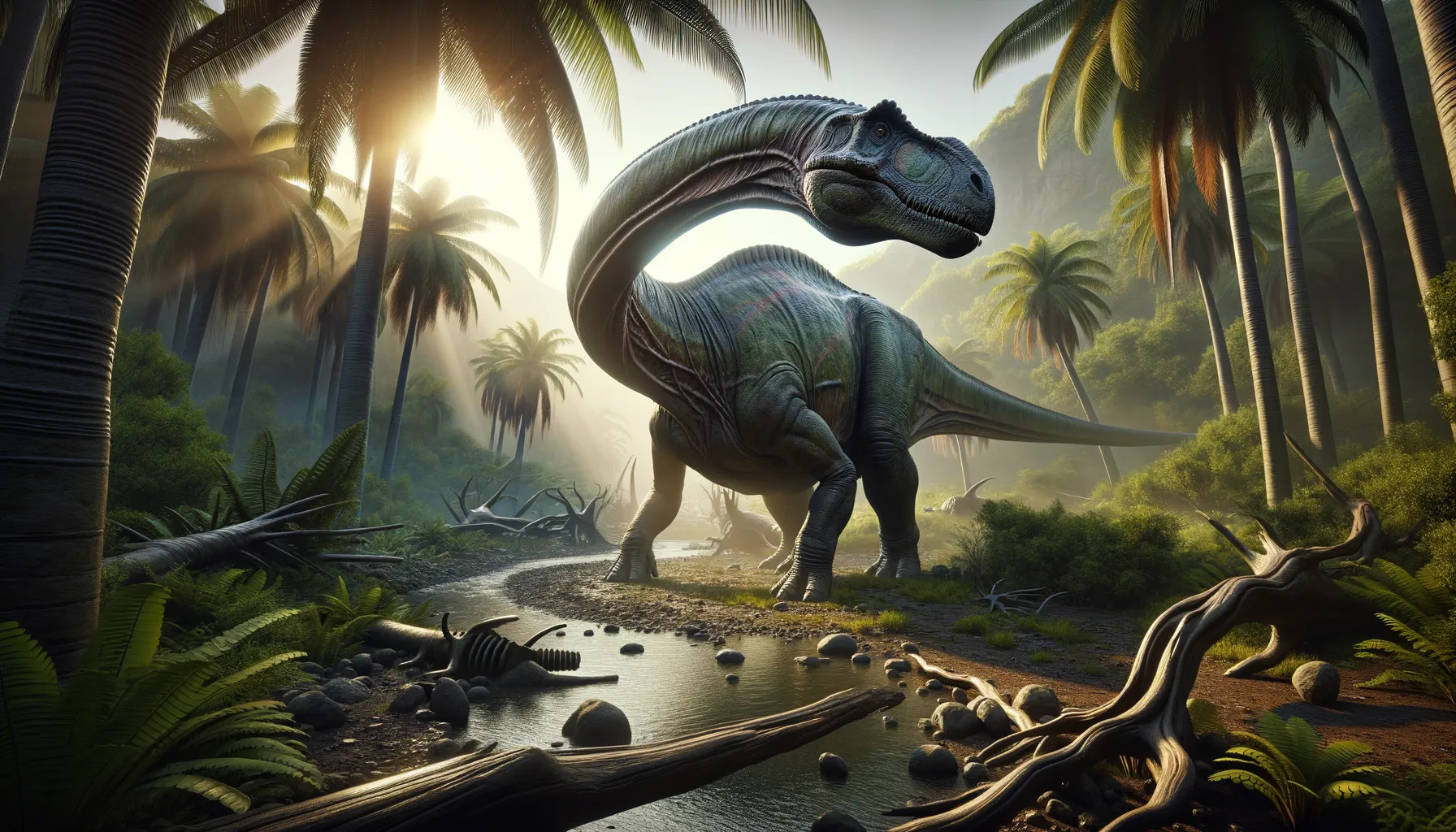
Ornithopsis
Colossal herbivore of the ancient world.
Period
Cretaceous
Length
Around 15 meters long.
Height
Approximately 10 meters tall.
Weight
Estimated to weigh over 20 tons.
Ornithopsis was a massive dinosaur that lived during the Cretaceous period. It was a formidable presence due to its enormous size and weight. This dinosaur belonged to the sauropod group, known for their long necks and tails. Fossils were first discovered in England, contributing to our understanding of giant herbivorous dinosaurs. Although slow-moving, its size offered significant protection against predators, and its diet consisted primarily of plant matter available in its habitat.
Diet
Ornithopsis primarily fed on plants. It likely consumed a large amount of foliage to sustain its massive size. Its long neck helped it reach vegetation that was not accessible to smaller herbivores.
Hunting
As a herbivore, it did not hunt other animals. Instead, it likely moved in groups to feed on vast tracts of vegetation. Its size deterred predators, although it might have had to defend against the larger carnivores of the time.
Environmental challenges
Ornithopsis faced changes in climate and vegetation patterns during its time. These changes required adaptations in feeding habits and migratory patterns to find sufficient food sources. The presence of large carnivorous dinosaurs posed a constant threat, although its size was a substantial deterrent. Natural disasters, like volcanic eruptions, could have affected its habitat significantly.
Speed
Likely slow-moving due to its massive size.
Lifespan
Possibly lived several decades.
First discovery
Discovered in England in the 19th century.
Fun Facts
- Ornithopsis is a genus of sauropod dinosaurs from the Early Cretaceous period, believed to have lived around 130 million years ago.
- The name 'Ornithopsis' means 'bird face,' reflecting the initial belief that it had similarities to birds.
- Ornithopsis fossils were first discovered in the Wealden Group of southeastern England, a region known for its rich dinosaur history.
- Despite its bird-like name, Ornithopsis was a massive herbivore, with a long neck and tail, similar to other sauropods.
- The first bones of Ornithopsis were discovered in the 19th century by the famous paleontologist Richard Owen, who also coined the term 'dinosaur'.
- It's still a mystery just how large Ornithopsis was, as only partial fossil remains have been found, making its size estimation challenging.
- Ornithopsis's initial discovery helped further the understanding of sauropod diversity during the Cretaceous period.
Growth and Development
Like other sauropods, Ornithopsis grew rapidly from a young age. Its growth rate was crucial for survival, as reaching a large size quickly offered protection against predators. It likely went through a prolonged developmental period, reaching adulthood over several years. The development of its long neck and massive body was essential for both feeding efficiency and defense.
Habitat
Ornithopsis inhabited vast floodplains and forested areas. These environments provided the ample vegetation needed for its sustenance. Cretaceous England offered a varied landscape, including riverbanks and open plains. Its habitat was crucial for grazing and social interaction with other sauropods.
Interaction with other species
Ornithopsis likely shared its environment with other herbivorous and carnivorous dinosaurs. It might have formed herds for protection and efficient feeding. Its sheer size would have influenced interactions, with smaller species often avoiding direct contact. Symbiotic relations with plants, like aiding in seed dispersal, could have developed between them.
Natural lifespan
Ornithopsis might have lived for several decades, given its size and environmental conditions.
Reproduction
Ornithopsis likely laid eggs in nests on the ground, similar to other sauropods. The young were vulnerable and required growth periods to attain size security against predators. Parental care might have been minimal after the initial egg-laying.
Social behaviour
Ornithopsis might have exhibited group living, moving in herds to protect against predators. Social structures could have been loose, focused mainly on ensuring survival. The herding behavior also facilitated finding food sources over large areas.
Fossil locations
Fossils of Ornithopsis have been primarily found in southern and eastern England. The discovery of these fossils contributed significantly to the understanding of sauropod diversity and their spread during the Cretaceous. Fossils are mostly represented by vertebrae and limb bones, indicating its large size.
